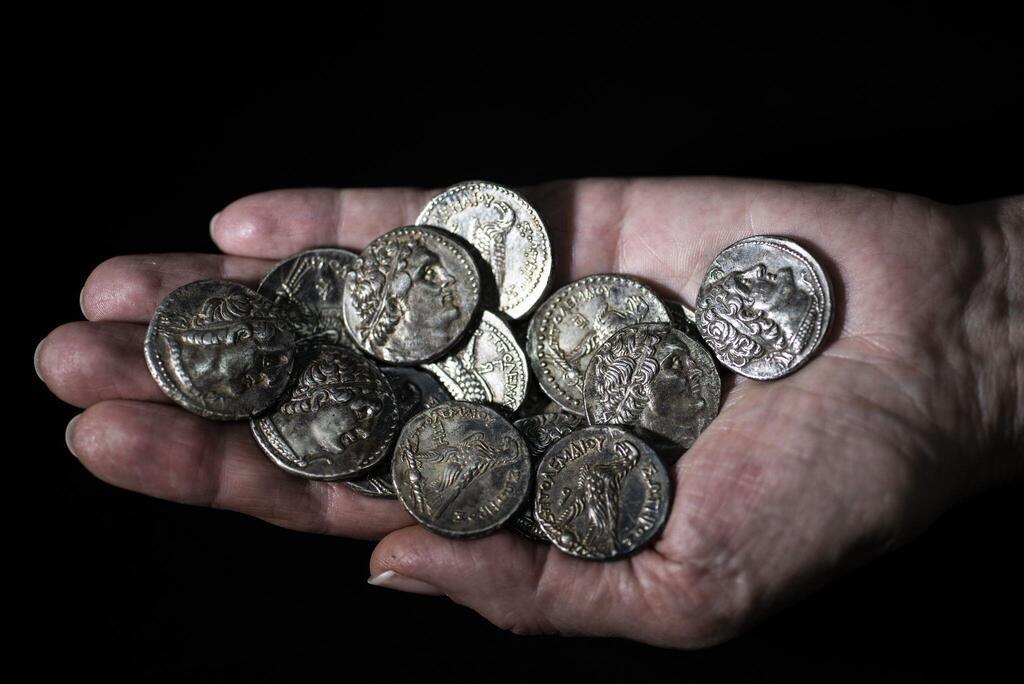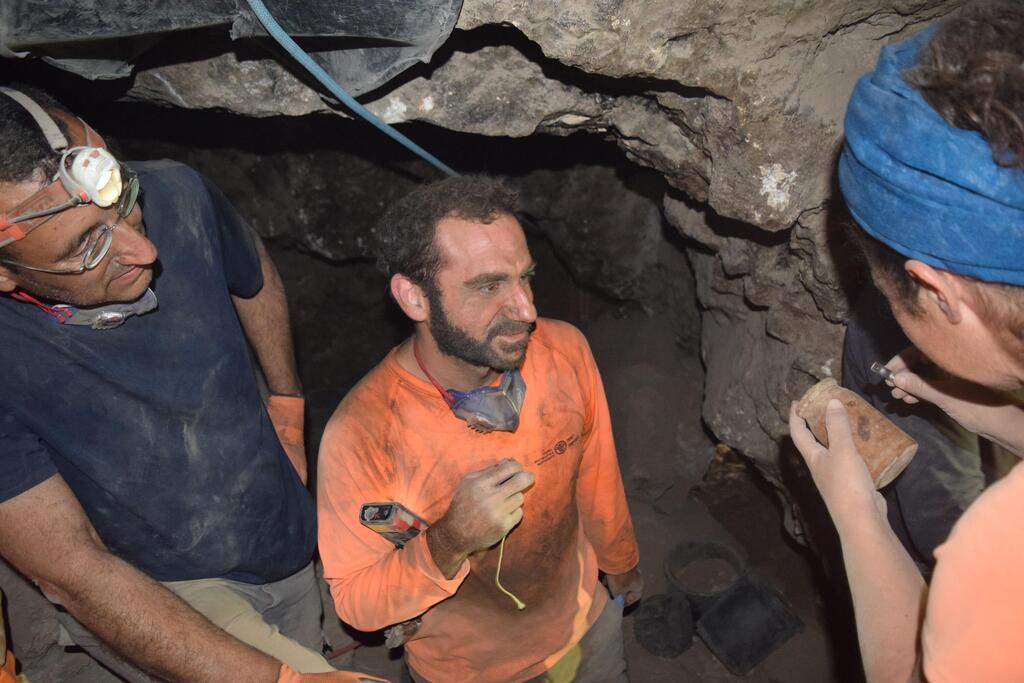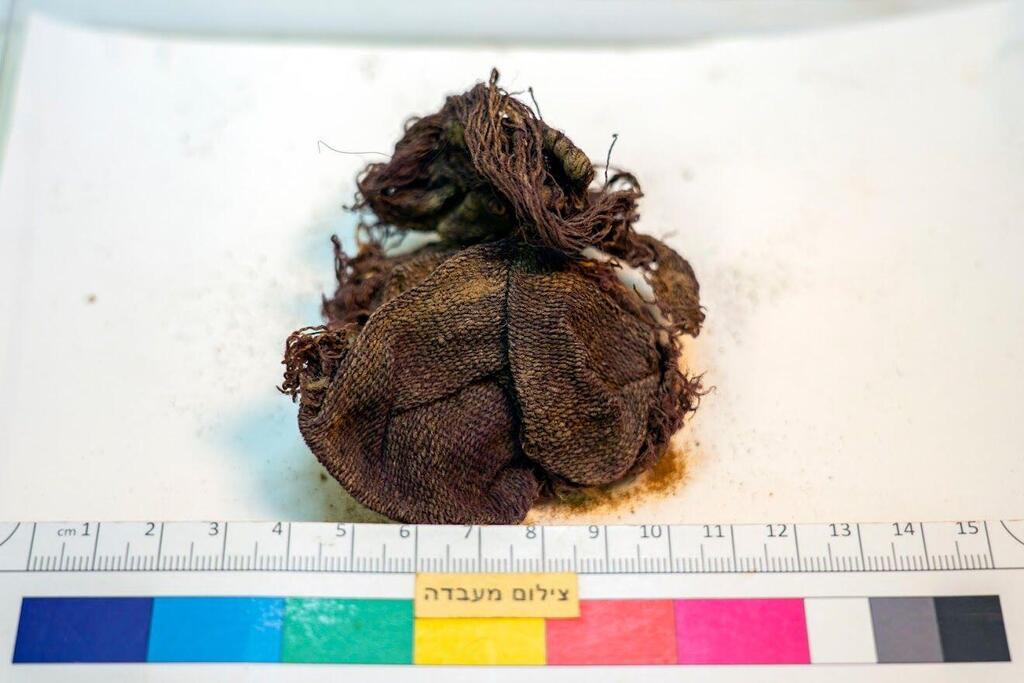No less than 15 ancient silver coins were found in a rare wooden box upon an Archeological dig in the Judean desert, possibly indicating the Maccabean revolt against the Seleucid empire.
The coins date back to the reign of of King Antiochus IV Epiphanes, a Hellenistic king who ruled over the Greek stronghold from 175-164 BC, when he died.
3 View gallery


Silver coins found in Judean Desert linked to Jewish revolt against Antiochos Epiphanes IV
(Photo: IAA)
The box was excavated last May, nestled deep in Muraba‘at Cave in the Darageh Stream Nature Reserve, apparently buried during the King's reign. Inside they found the coins wrapped in a piece of purple fabric. One of the coins had the name "Shalmai" incised in ancient Aramaic.
The coins discovered in a cave
(Footage: Yaniv Berman, Antiquities Authority)
The rescue excavation was carried out in in March–May 2022 in the framework of the Judean Desert Excavation and Survey Project run by the Israel Antiquities Authority and the Archaeological Office for the Military Administration of Judea and Samaria, in cooperation with the Ministry for Jerusalem and Heritage.
The theory is that a refugee hid it in the cave with the intent of picking it up when the revolt was over, but apparently died before he could pick it up again. The coins were a homogeneous group of silver tetradrachm coins. They were minted from 176 to 171 BC by Ptolemy VI, who was Cleopatra's son. His ascendancy to the Egyptian throne happened at the tender age of six, upon his father's demise.
3 View gallery


Oriya Amichai, Hagai Hamer and Dr. Amir Ganor examining their findings
(Photo: Eitan Klein, Antiquities Authority)
Using the coins as an indication, it is believed the Maccabean revolt began around 170 BC in response to King Antiochus' decrees against the Jewish religion.
Dr. Eitan Klein studied the coins along with Israel Antiquities Authority numismatic expert, Dr. Gabriela Bijovsky. "It is interesting to try to visualize the person who fled to the cave and hid his personal property here intending to return to collect it. The person was probably killed in the battles, and he did not return to collect his possessions that awaited almost 2,200 years until we retrieved it. This is an absolutely unique find, presented the first clear archaeological evidence that the Judean Desert caves played an active role as the stage of the activities of the Jewish rebels or the fugitives in the early days of the Maccabean Revolt, or the events that led up to them."
One of the theories offered as to why the coins would be hidden in the first place is Antiochus' raid, plundering all Jerusalem Temple treasures. Additionally, Antiochus issued religious decrees against the Jews in 167 BC.
The book of Maccabees, 2:29–37, describes how those who opposed the King's rule and were persecuted by him, fled to the wilderness with their families to seek refuge, but were ultimately discovered by the King's forces and a slaughter of around 1,000 of them took place.
“The Survey and Excavation Project carried out by the Israel Antiquities Authority in the Judean Desert over the past six years has proved itself," said Amir Ganor, Director of the excavation on behalf of the Israel Antiquities Authority. "In that thousands of archaeological artifacts have been saved from destruction and plundering, including parts of biblical scrolls, arrowheads from the Bar Kokhba Revolt, a 10,500-year-old basket, and more.”
The coins will be exhibited to the public in the Hasmonean Museum in Modi‘in, as part of the “Israel Heritage Week” that will take place on Hanukkah.




